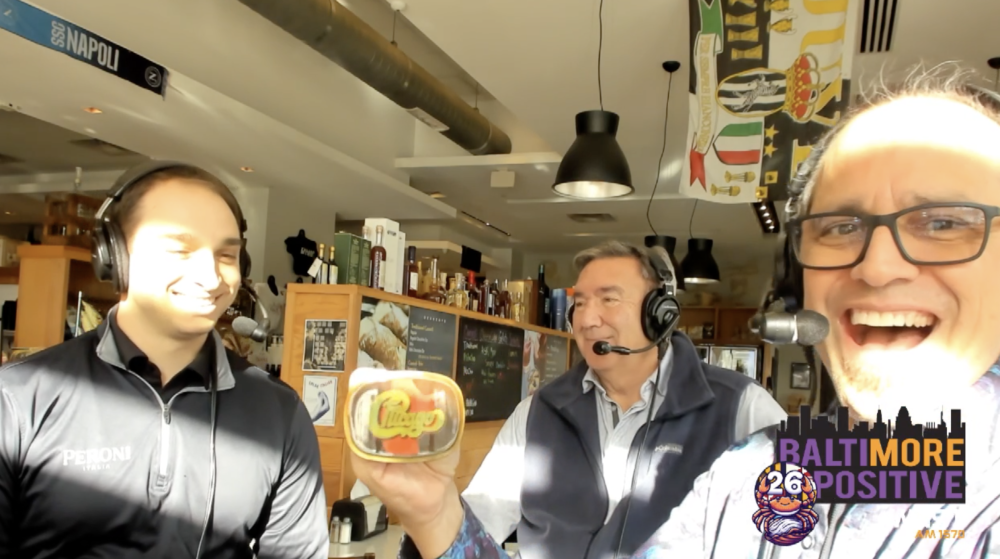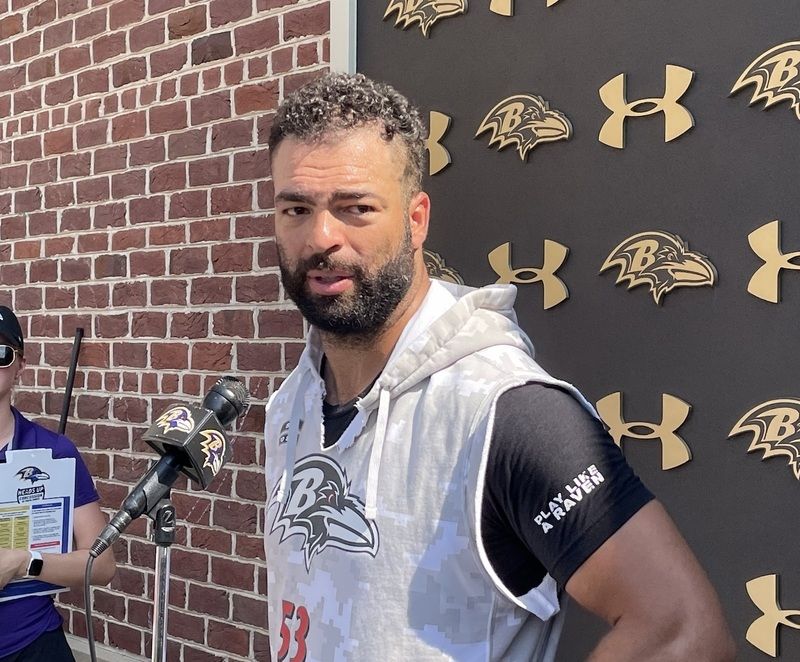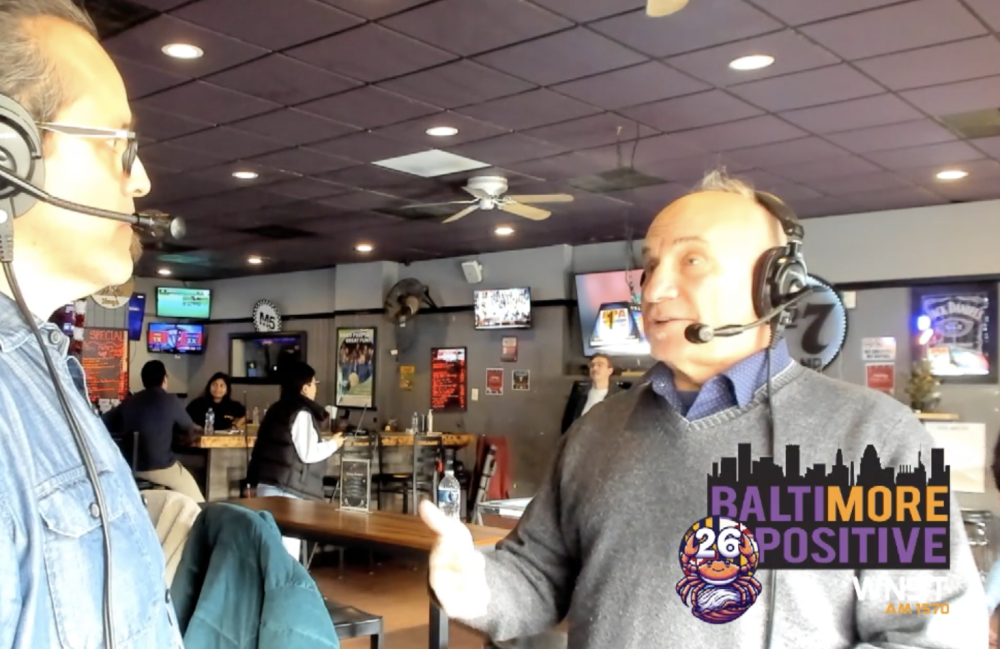The start of free agency is just under two months away with the Ravens entering the offseason sooner than anticipated after a franchise-record 14-2 regular season that ended with shocking disappointment in the divisional round of the playoffs.
The Ravens currently have an estimated 2020 salary cap commitment of just over $166 million to 41 players (not including pending free agents or players recently signed to reserve-future contracts), according to OverTheCap.com. The 2020 salary cap has not been officially set, but it’s projected to rise from $188.2 million in 2019 to an estimated $200 million.
General manager Eric DeCosta seems likely to create additional cap space by extending, renegotiating, or terminating the contracts of a few veteran players. That list could include the likes of safety Tony Jefferson, offensive lineman James Hurst, and defensive back Brandon Carr, who all have 2020 cap numbers that may exceed how the Ravens value their services at this point. Pro Bowl left tackle Ronnie Stanley is a logical candidate for a long-term contract extension as he’s set to carry a $12.866 million cap figure in his fifth-year option season.
Below is a look at Baltimore’s 2020 class of free agents:
UNRESTRICTED FREE AGENTS
The Ravens will have the opportunity to extend any of the following unrestricted free agents before they may officially sign with any team beginning March 18 at 4 p.m.
LB Josh Bynes – The 30-year-old was one of Baltimore’s best in-season signings in recent memory and graded sixth among linebackers by Pro Football Focus, but long-term solutions will be explored.
DT Justin Ellis – The 350-pound run-stopping lineman was a healthy scratch in three of the last four regular-season games, but the status of other defensive linemen may help his chances for a return.
OL Hroniss Grasu – His second stint with Baltimore led to him being a game-day reserve late in the season, but you’d expect the Ravens to aim to improve their interior offensive line depth.
OLB Matthew Judon – The Pro Bowl selection will be paid lucratively by someone, but does the lack of depth at this position force Baltimore to step outside its financial comfort zone to keep him?
DB Anthony Levine – Though still a special-teams standout, the 32-year-old played in just 17 percent of defensive snaps as his particular role in the dime package diminished in 2019.
OLB Pernell McPhee – A torn triceps ended what had been a productive start to his ninth NFL campaign, so McPhee returning in a situational role at a cheap price seems plausible.
WR Chris Moore – The 2016 fourth-round pick hasn’t developed into the deep-threat wide receiver some hoped he would be, but he’s been one of Baltimore’s best special-teams players since his arrival.
ILB Patrick Onwuasor – Considered an ascending player poised for a 2019 breakout, Onwuasor struggled at the “Mike” and saw his role diminish as the year progressed, leaving his future in doubt.
DT Domata Peko – The 35-year-old left open the possibility of playing a 15th NFL season, but Baltimore would probably prefer more youth and long-term upside for this position group.
DT Michael Pierce – Pierce worked his way back into shape after well-documented weight problems in the spring and is in line for a substantial payday despite not having a standout contract year.
DB Jordan Richards – Until being deemed a healthy scratch in the playoff loss to the Titans, Richards was a regular on special teams and only turns 27 later this month.
WR Seth Roberts – He ranked third among Baltimore wide receivers in snaps and blocks well, but his costly drop in the first half of the playoff loss reinforces the need for more play-making ability here.
OT Andre Smith – Signed as a depth piece last week, the former Cincinnati Bengal and 2009 first-round pick has 98 career starts under his belt and probably isn’t in the organization’s long-term plans.
CB Jimmy Smith – In an ideal world, Smith would re-sign as part of an outside trio including Marcus Peters and Marlon Humphrey, but his likely asking price and injury history are deterrents.
WR/RS De’Anthony Thomas – He showed little as a returner and was flagged for blocking after calling a fair catch in the playoff loss, a costly penalty he committed more than once this season.
S Brynden Trawick – An elbow injury limited him to just six games, but the 30-year-old is a good special-teams player, which always leaves the door open for a return to Baltimore.
DE/OLB Jihad Ward – Coaches and teammates spoke highly of the 25-year-old edge defender this season, making his return to be part of the rotation quite possible at a reasonable price.
RESTRICTED FREE AGENTS
The following players have accrued three years of service and have expiring contracts. The Ravens can tender each with a restricted free agent offer, but other teams may then sign that player to an offer sheet. If that occurs, Baltimore has the right to match the offer and keep the aforementioned player. If the Ravens elect not to match, they would receive compensation based on which restricted tender they offered that player.
There are three different tenders — the values won’t be set until the 2020 salary cap is finalized — that can be made: a first-round tender ($4.407 million in 2019) would award the competing team’s first-round selection, a second-round tender ($3.095 million in 2019) would fetch the competing team’s second-round pick, and a low tender ($2.205 million in 2019) would bring the competing team’s draft choice equal to the round in which the player was originally drafted. For example, a restricted free agent selected in the fifth round would be worth a fifth-round pick if given the low tender. If a player went undrafted originally and is given the low tender, the Ravens would only hold the right to match the competing offer sheet and would not receive any draft compensation if they chose not to.
With less-heralded restricted free agents, the Ravens often elect to forgo a tender and will attempt to re-sign them at cheaper rates.
The original round in which each player was drafted is noted in parentheses:
OL Parker Ehinger (fourth) – The 27-year-old was active in four of the last five regular-season games, but signing him to anything more than a league-minimum deal would be surprising.
C Matt Skura (undrafted) – The second-round tender seemed likely for the starter before a serious knee injury in late November, but the Ravens gambling with the low tender isn’t impossible now.
EXCLUSIVE RIGHTS FREE AGENTS
These players have less than three years of accrued service and can be tendered a contract for the league minimum based on their length of service in the league. If tendered, these players are not free to negotiate with other teams. The Ravens usually tender all exclusive-rights free agents with the idea that there’s nothing promised beyond the opportunity to compete for a spot. Exclusive-rights tenders are not guaranteed, meaning a player can be cut at any point without consequence to the salary cap.
OL Randin Crecelius – After spending 2018 on the practice squad, the former rookie free agent sustained a concussion early in training camp and was placed on IR at the end of the preseason.
RB Gus Edwards – The second-year backup to Mark Ingram averaged 5.3 yards per carry and would start for plenty of teams around the league, making him a great value to the organization.
DB Fish Smithson – The 25-year-old Baltimore native was signed late in the preseason and ended up on IR just a few days later.
The Ravens currently have an estimated 2020 salary cap commitment of just over $166 million to 41 players (not including pending free agents or players recently signed to reserve-future contracts), according to OverTheCap.com. The 2020 salary cap has not been officially set, but it’s projected to rise from $188.2 million in 2019 to an estimated $200 million.
General manager Eric DeCosta seems likely to create additional cap space by extending, renegotiating, or terminating the contracts of a few veteran players. That list could include the likes of safety Tony Jefferson, offensive lineman James Hurst, and defensive back Brandon Carr, who all have 2020 cap numbers that may exceed how the Ravens value their services at this point. Pro Bowl left tackle Ronnie Stanley is a logical candidate for a long-term contract extension as he’s set to carry a $12.866 million cap figure in his fifth-year option season.
Below is a look at Baltimore’s 2020 class of free agents:
UNRESTRICTED FREE AGENTS
The Ravens will have the opportunity to extend any of the following unrestricted free agents before they may officially sign with any team beginning March 18 at 4 p.m.
LB Josh Bynes – The 30-year-old was one of Baltimore’s best in-season signings in recent memory and graded sixth among linebackers by Pro Football Focus, but long-term solutions will be explored.
DT Justin Ellis – The 350-pound run-stopping lineman was a healthy scratch in three of the last four regular-season games, but the status of other defensive linemen may help his chances for a return.
OL Hroniss Grasu – His second stint with Baltimore led to him being a game-day reserve late in the season, but you’d expect the Ravens to aim to improve their interior offensive line depth.
OLB Matthew Judon – The Pro Bowl selection will be paid lucratively by someone, but does the lack of depth at this position force Baltimore to step outside its financial comfort zone to keep him?
DB Anthony Levine – Though still a special-teams standout, the 32-year-old played in just 17 percent of defensive snaps as his particular role in the dime package diminished in 2019.
OLB Pernell McPhee – A torn triceps ended what had been a productive start to his ninth NFL campaign, so McPhee returning in a situational role at a cheap price seems plausible.
WR Chris Moore – The 2016 fourth-round pick hasn’t developed into the deep-threat wide receiver some hoped he would be, but he’s been one of Baltimore’s best special-teams players since his arrival.
ILB Patrick Onwuasor – Considered an ascending player poised for a 2019 breakout, Onwuasor struggled at the “Mike” and saw his role diminish as the year progressed, leaving his future in doubt.
DT Domata Peko – The 35-year-old left open the possibility of playing a 15th NFL season, but Baltimore would probably prefer more youth and long-term upside for this position group.
DT Michael Pierce – Pierce worked his way back into shape after well-documented weight problems in the spring and is in line for a substantial payday despite not having a standout contract year.
DB Jordan Richards – Until being deemed a healthy scratch in the playoff loss to the Titans, Richards was a regular on special teams and only turns 27 later this month.
WR Seth Roberts – He ranked third among Baltimore wide receivers in snaps and blocks well, but his costly drop in the first half of the playoff loss reinforces the need for more play-making ability here.
OT Andre Smith – Signed as a depth piece last week, the former Cincinnati Bengal and 2009 first-round pick has 98 career starts under his belt and probably isn’t in the organization’s long-term plans.
CB Jimmy Smith – In an ideal world, Smith would re-sign as part of an outside trio including Marcus Peters and Marlon Humphrey, but his likely asking price and injury history are deterrents.
WR/RS De’Anthony Thomas – He showed little as a returner and was flagged for blocking after calling a fair catch in the playoff loss, a costly penalty he committed more than once this season.
S Brynden Trawick – An elbow injury limited him to just six games, but the 30-year-old is a good special-teams player, which always leaves the door open for a return to Baltimore.
DE/OLB Jihad Ward – Coaches and teammates spoke highly of the 25-year-old edge defender this season, making his return to be part of the rotation quite possible at a reasonable price.
RESTRICTED FREE AGENTS
The following players have accrued three years of service and have expiring contracts. The Ravens can tender each with a restricted free agent offer, but other teams may then sign that player to an offer sheet. If that occurs, Baltimore has the right to match the offer and keep the aforementioned player. If the Ravens elect not to match, they would receive compensation based on which restricted tender they offered that player.
There are three different tenders — the values won’t be set until the 2020 salary cap is finalized — that can be made: a first-round tender ($4.407 million in 2019) would award the competing team’s first-round selection, a second-round tender ($3.095 million in 2019) would fetch the competing team’s second-round pick, and a low tender ($2.205 million in 2019) would bring the competing team’s draft choice equal to the round in which the player was originally drafted. For example, a restricted free agent selected in the fifth round would be worth a fifth-round pick if given the low tender. If a player went undrafted originally and is given the low tender, the Ravens would only hold the right to match the competing offer sheet and would not receive any draft compensation if they chose not to.
With less-heralded restricted free agents, the Ravens often elect to forgo a tender and will attempt to re-sign them at cheaper rates.
The original round in which each player was drafted is noted in parentheses:
OL Parker Ehinger (fourth) – The 27-year-old was active in four of the last five regular-season games, but signing him to anything more than a league-minimum deal would be surprising.
C Matt Skura (undrafted) – The second-round tender seemed likely for the starter before a serious knee injury in late November, but the Ravens gambling with the low tender isn’t impossible now.
EXCLUSIVE RIGHTS FREE AGENTS
These players have less than three years of accrued service and can be tendered a contract for the league minimum based on their length of service in the league. If tendered, these players are not free to negotiate with other teams. The Ravens usually tender all exclusive-rights free agents with the idea that there’s nothing promised beyond the opportunity to compete for a spot. Exclusive-rights tenders are not guaranteed, meaning a player can be cut at any point without consequence to the salary cap.
OL Randin Crecelius – After spending 2018 on the practice squad, the former rookie free agent sustained a concussion early in training camp and was placed on IR at the end of the preseason.
RB Gus Edwards – The second-year backup to Mark Ingram averaged 5.3 yards per carry and would start for plenty of teams around the league, making him a great value to the organization.
DB Fish Smithson – The 25-year-old Baltimore native was signed late in the preseason and ended up on IR just a few days later.


























